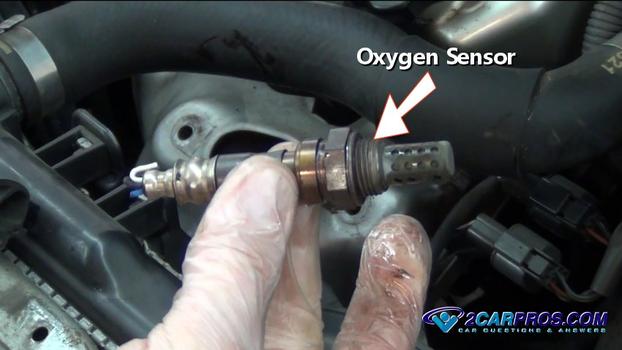Engine Stalls While Driving
Stalls While Driving
Starts Fine But Stalls While Driving
Helpful Information
A shorted sensor doesn't always set a check engine light or MIL (malfunction indicator light). The computer is programmed to trigger a "service engine soon light" when the sensor has failed for a predetermined amount of time, say one minute, it only takes an intermittent shorting sensor one second to stop the computer system (stall engine). To troubleshoot this problem, temporally disconnect major sensors one at a time and retest ie: oxygen, coolant and MAF. (This will cause a service engine soon light, codes will need to be cleared after testing). When troubleshooting a stalling problem additional codes maybe present such as an EVAP code which should be ignored until the more major problems are repaired. Not all electrical problems can be detected by the computer.
Many electronic components are used simultaneously while using electrical contacts to operate various systems which can make diagnosing stalling problems tedious. An electrical circuit that is starting to fail will do so more when the circuit is warm or hot. Signs of heated or melted connections have high resistance and could cause a shorted connection.

Corroded Connection
The majority of the engine stalling problems will be electronic based, while some problems are obvious such as a loose connector, others can be difficult to detect such as an internally shorted wiring harness, though rare, it does happen.

Shorted Wiring Harness

Corroded Connection

Shorted Wiring Harness
Easy step by step guide on how to repair an automotive engine that has stalled or intermittently stalls while driving, this information is presented in order of popularity and pertains to most vehicles.
Difficulty Scale: 5 of 10
Begin with the vehicle on level ground engine off (cold) with the emergency brake set.
By illuminating the "check engine" warning lamp, the computer has detected a problem which can pertain to engine stalling while driving. Learn more

Check Engine Light MIL
Step 1 - When a crankshaft angle sensor shorts out it will cause the engine to stall, this sensor is used to give feedback information to the engine computer (PCM), this sensor failure is not always picked up by the computer. Learn more

Removing Failed Crankshaft Sensor CAS or CKS
Step 2 - A fuel pump operation failure will cause the engine to stall out due to the in-adequate amount of fuel volume and pressure while the engine is running. Learn more

Failed Fuel Pump
Step 3 - If injector pulse stops, the engine will stall. Monitoring the fuel injector pulse can help narrow the problem down, the following test will need to be modified using longer test wires while locating the light portion of the test inside the vehicle to be observed while driving. Learn more

Monitoring Fuel Injection System
Step 4 - If a main system relay or ignition switch fails the engine will stall intermittently, once the electrical connections cool down the system will operate again until heated. The computer system uses a steady supply of voltage to operate, Intermittent stalling can be a frustrating problem to find, but if a test light is located inside the passenger compartment with the leads connected to a suspected failed circuit such as the ignition switch. While observing the light when the engine stalls, either "ON" or "OFF" if the circuit is okay or faulty, continue testing. Learn more

Test Computer System Relay
Step 5 - If a fuse fails the engine will stall, if the problem is intermitted test the fuses with the engine running and employ the "wiggle test" which means wiggle all main fuses and relays to see if the engine stalls then repair the connection. A system fuse is designed to protect an electrical circuit in case of a short circuit, but when a fuse ages it can become loose causing an unstable supply of electricity. Learn more

Wiggle Test
Step 6 - A catalytic converter can effectively plug the exhaust system causing the engine to stall, this catalytic converter is designed as part of the vehicle's emission system which can break apart internally. To check for this condition start with the engine cold, take a rubber mallet and gently strike the catalytic converter, if it sounds like rocks inside, remove to inspect for internal damage. Learn more

Broken Catalytic Converter
Step 7 - If the battery cables are loose or corroded it can cause the engine to stall. Good battery connections are mandatory for the electrical system to stay healthy and operate correctly. Learn more

Battery Terminal Corrosion
Step 8 - When a feedback sensor short circuits it can cause the computer to shut down, sensors most prone to failure deal with extreme heat like an oxygen or coolant sensor. There are a variety of sensors that provide feedback data for the engine management computer PCM (powertrain control module). Learn more

Failed Oxygen Sensor
Step 9 - When the main computer fails, it will cause the engine to stall. The main computer system or PCM (Powertrain control module) controls fuel, ignition, transmission and emission systems. (Note: When replacing a computer re-programming is necessary before installation.) Learn more

Computer - Powertrain Control Module (PCM)
Step 10 - If the incorrect weight oil has been installed the engine will hold open the valves by not allowing the lifters to bleed down which causes the engine to stall. Engine oil weight is important on today's close tolerance engines.

Wrong Weight Oil

Check Engine Light MIL

Removing Failed Crankshaft Sensor CAS or CKS
Step 2 - A fuel pump operation failure will cause the engine to stall out due to the in-adequate amount of fuel volume and pressure while the engine is running. Learn more

Failed Fuel Pump

Monitoring Fuel Injection System

Test Computer System Relay

Wiggle Test

Broken Catalytic Converter

Battery Terminal Corrosion

Failed Oxygen Sensor

Computer - Powertrain Control Module (PCM)

Wrong Weight Oil
Comments
Post a Comment